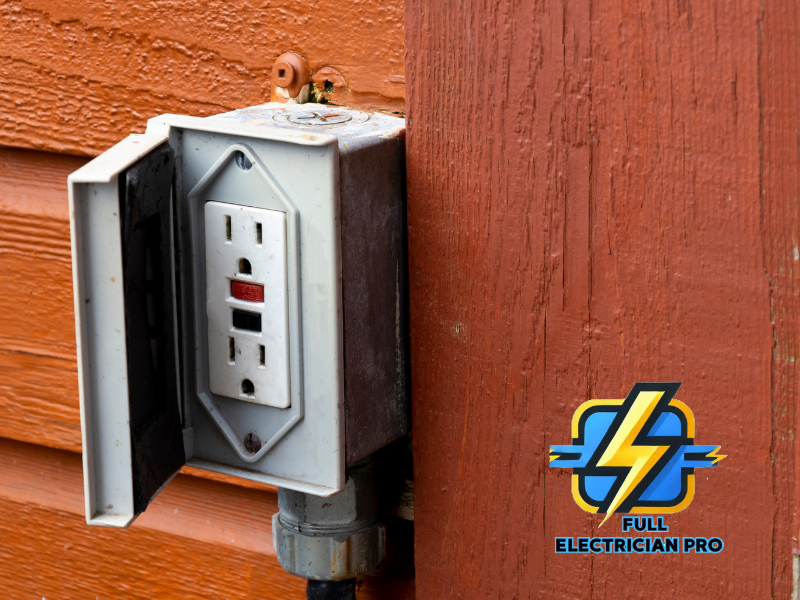
GFCI Outlets: Failures, Repairs, and Reasons for Use
GFCI (Ground Fault Circuit Interrupter) outlets are essential safety devices designed to protect people from electrical shock in areas where water and electricity may come into contact, such as kitchens, bathrooms, and outdoor spaces. They detect ground faults—when electrical current leaks outside of the normal circuit—and immediately cut off power to prevent injury. However, like any electrical component, GFCI outlets can fail and require repairs. Understanding their common failures, necessary repairs, and the reasons for their use will help ensure that your home or business stays safe and compliant with electrical safety standards.
Common GFCI Outlet Failures
1. Frequent Tripping: GFCI outlets are designed to trip when they detect even minor ground faults. However, if your GFCI outlet trips frequently without obvious cause, it may indicate a more significant issue with the outlet itself, the wiring, or the appliance connected to it.
2. Failure to Reset: After a GFCI outlet trips, pressing the "reset" button should restore power. If the outlet fails to reset, there could be a wiring issue, or the outlet itself may need to be replaced.
3. False Tripping: Some GFCI outlets may trip even when no ground fault exists. This can be caused by moisture, dust, or faulty installation. It may also occur when using devices with motors or certain types of electronics that create harmless electrical noise.
4. Outlet Not Providing Power: If a GFCI outlet stops providing power but has not tripped, it may be due to internal wear or faulty wiring, requiring immediate repair or replacement.
5. Outlet Feels Warm or Hot: A GFCI outlet should never feel warm or hot to the touch. If it does, this could indicate an overloaded circuit or a faulty outlet that needs immediate attention.
GFCI Outlet Repairs
1. Replacing Worn-Out GFCI Outlets: Over time, GFCI outlets can wear out and fail to provide the necessary protection against electrical shock. Replacing old or malfunctioning outlets is a straightforward repair that ensures continued safety.
2. Fixing Faulty Wiring: If the issue lies within the wiring of the outlet or the circuit it’s connected to, a professional electrician can rewire the outlet to restore its functionality and safety.
3. Addressing Frequent Tripping: If a GFCI outlet is tripping frequently, an electrician can diagnose whether the issue is with the outlet itself, the wiring, or the connected devices. Replacing the outlet or fixing the root cause of the problem ensures that the outlet functions as intended.
4. Reset Button Repair: In some cases, the "test" and "reset" buttons on a GFCI outlet may become unresponsive. This can be due to internal wear or mechanical failure. Repairing or replacing the outlet will restore its functionality.
5. Replacing Improperly Installed Outlets: If a GFCI outlet has been installed incorrectly, it may not function as it should. In such cases, it’s important to have the outlet reinstalled properly to ensure it protects against electrical hazards.
Reasons to Use GFCI Outlets
1. Prevent Electrical Shock: The primary reason for using GFCI outlets is to protect people from electrical shock, especially in areas where water and electricity are present, such as bathrooms, kitchens, and outdoor spaces. GFCI outlets can detect ground faults in a fraction of a second and shut off power, preventing serious injuries or fatalities.
2. Required by Electrical Code: In most regions, electrical codes require GFCI outlets to be installed in certain areas of the home or business, including bathrooms, kitchens, garages, and outdoor locations. Keeping your property up to code is essential for both safety and compliance.
3. Enhanced Fire Safety: By shutting off power during a ground fault, GFCI outlets also help reduce the risk of electrical fires caused by short circuits or other electrical malfunctions.
4. Protecting Sensitive Electronics: GFCI outlets can protect sensitive electronic equipment from power surges caused by ground faults. This is particularly important in homes or businesses with expensive electronics that are vulnerable to electrical damage.
5. Easy Testing and Maintenance: GFCI outlets come with built-in "test" and "reset" buttons, making it easy to check if the outlet is functioning correctly. Regular testing ensures that the outlet will work when it’s needed most, offering peace of mind.
In conclusion, GFCI outlets are a critical safety feature in any home or business. Whether for protecting against electrical shock, complying with local electrical codes, or preventing fires, GFCI outlets provide valuable peace of mind. Regular testing, timely repairs, and professional installations ensure that your GFCI outlets will continue to protect you and your property from electrical hazards.